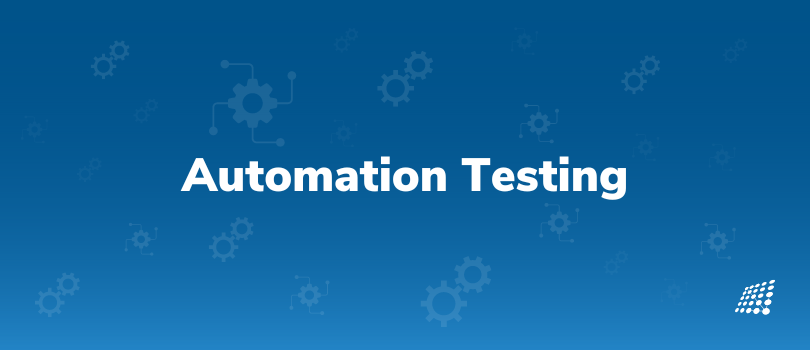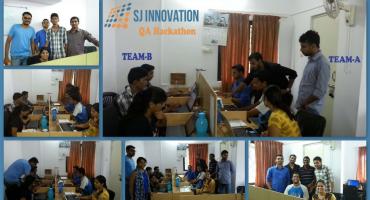Do's and Don'ts of Automation Testing

What is Automation in Testing?
Automation Testing is the method of testing software products with special testing tools and frameworks to minimize human intervention and maximize quality. Automation Testing is done with the help of automation software, and it controls the flow of the execution of tests as per the written test scripts. They are then compared with predicted outcomes to ensure the quality and reliability of the application. With Automation Testing, one can perform necessary repetitive tasks and those tasks that are hard to achieve with manual testing. Therefore, this type of testing is critical for CI/CD tools like jenkins pipelines. So, what is automated testing in software engineering? And What does UAT Tester do? This article will answer all the questions you may have.
Why Automation Testing?
When a company develops a product, it is bound to have defects. So, before the release of the product, the company needs to capture the flaws in it to provide a seamless user experience. It is the responsibility of the testing team to perform various kinds of testing, from functional to non-functional, to ensure the effectiveness, efficiency, and better user experience of the overall product. UAT tester tests to check whether a software solution works for the user or not.
Though testers do Manual and Automation testing both, doing Automation Testing eases a lot of manual work, provides accurate results, and saves up a lot of time, which results in the quicker delivery of the product. Platforms like Jenkins for test automation has proven to be a popular choice in the world of automation testing.
Tools for Test Automation
Test automation vs Manual testing has been an ongoing debate however Test automation often is deemed superior. An automation tool should be chosen based on the type of testing and the type of framework you are going to implement. There are a lot of tools available in the market for you to choose from as per your requirements. Some of the most widely used automation tools are listed below.
Selenium: Test Automation Selenium is a tool to test web applications and web browsers. It has multiple powerful tools for testing web applications. Also, it supports multiple platforms and browsers. The selenium webdriver can also execute Javascript for test automation. Test automation (Javascript) is one of the most widely used programming languages by developers.
Sikuli: Sikuli is an open-source automation testing tool used to perform GUI testing.
JMeter: It is a tool that is used for performance tests.
QuickTest Professional (QTP): Testers use QTP to perform automated regression testing to identify gaps between the actual and desired results and detect the errors/defects that the outcome has.
JUnit and NUnit: These tools are used by professionals to perform unit testing.
Python: As well as being a programming language, test automation with/in python is possible as it comes with a set of tools and libraries to help you create automated tests for your application.
TestNG: TestNG is more like a framework than a tool, which supports Selenium, REST Assured, Appium, etc. Testers can generate HTML reports for the tests with their status—passed, failed, or skilled. Later on, they can re-execute the failed test cases.
SoapUI: It is a testing tool used for API testing.
Appium: It is a tool to perform mobile application testing and native app testing.
Testing Frameworks
A testing framework has a set of guidelines for the professionals that include coding standards, repository management and handling of test data to get beneficiary outcomes such as easy code reuse, reduced time to manage scripts, and high portability. Here are the commonly used testing frameworks:
Linear Framework: This is the simplest framework of all. Under this framework, you need to write a simple code to run the test cases without any modularity or sequential steps. It works as a record-and-playback model.
Keyword-driven Framework: It is a scripting technique where you associate keywords with certain actions, such as opening or closing of a browser, mouse-click events, and others. Later on, in your test scripts, you can call these keywords to perform a specific step. Also, you will have a file where you will maintain all the keywords, along with the actions they perform.
Data-driven Framework: In a data-driven framework, all the test case data inputs are stored in the table or in extension files, including .xls, .xml, .csv, etc. While executing the test scripts, it will read the values from the table. With the help of this framework, you can perform both positive and negative test cases.
Page Object Model Framework: In the POM framework, you will create an object repository for the web UI elements. It allows you to call these methods later on without having to write the code again. Thus, it results in less verbosity, code reusability, and reduced time-consumption to write test scripts.
Modular Framework: The modular framework allows you to divide the test scripts into small, independent modules. These modules will interact with each other in a hierarchical manner to run large test scripts. This will also help you create the required test scenarios and test the scripts individually.
Benefits of Automation Testing
- It proves to be reliable since it is carried out by efficient testing tools.
- 70% faster than manual testing, which saves a lot of time for testers and the organization as a whole.
- Automation Testing avoids human intervention while executing test scripts.
- It allows re-usability and re-running of test cases.
- It increases the speed and efficiency of the software testing process.
- Automation Testing covers all the application features.
- It also allows for the faster delivery of the product into the market.
- Faster feedback systems, which come with Automation Testing, results in an easy communication flow between developers and testers and helps detect and fix bugs earlier.
- It offers improved accuracy as it holds no possibility of human errors.
- It has the capability to run massive amounts of test cases at a time.
The Right Automation Tool
Automation Testing is not possible without the right testing tool. Selecting the right tool is a critical phase in the testing life cycle where one has to consider the following points:
- Familiarity with the tool among the resources on-board
- Total budget and flexibility
- Technologies and programming languages used to build the project
- Choosing a tool that has a support team to take care of any queries and issues
Automation Test Plan, Design, and Strategy
As the name suggests, in this phase, you make a plan, design the architecture, and create a strategy to achieve the goal of test automation.
- Test plan: Creation of test standards and procedures, hardware, software, and test data requirements
- Test design: Design the test architecture to determine the flow of the test procedures that follow
- Test strategy: Select a suitable test automation framework
Key test automation challenges:
- Finding the right framework and tool
- Effective communication & collaboration in team
- Identifying the test automation strategy
- Setting realistic expectations of automation
- High initial investment
- Inadequate testing infrastructure
- Problems with data reliance
- Finding the right skills
- Stakeholders and end-users expectations
What to do for successful Test Automation
Break Your Tests Into Shorter And Independent Scenarios
Detecting issues will be easier for you if you have a suite that contains shorter and more specific scenarios. Do not test everything in a single test scenario. In that way, troubleshooting will become very difficult. So, try keeping it shorter and simpler.
Choose The Tests You Need Automating
Every test is different. Certain tests are hard to develop due to technology constraints. Other tests do not require running frequently. Hence, choose which tests you require automating. Always consider the return on investment you will obtain by automating the tests.
Start Small And Gradually Create Test Suites As You Proceed
As you start, only consider creating what you require and go with the project’s workflow. Frequent changes constantly occur in the projects. Do not waste energy, money, and time on creating the things that would never be of any use or would get changed in future. Consider creating the suite gradually as you go.
Set Priorities
The functions, which are quite simple to test often, are covered by a huge quantity of tests. This results in increased test numbers within some areas, while the others that are possibly more crucial are left badly tested. This, in turn, leads to reduced risk coverage. Hence, you need to set your priorities consciously.
Employ Professionals And Use The Appropriate Tools
Establishing skills and knowledge within one’s own business is very important for achieving long-term success. Hence, you should always carry out your software testing with professionals. Here you can use JIRA which gives one of the best software quality assurance services.
Choose the team and tools prudently
It is vital to have the right set of people working on the right tools to reap the maximum benefits from test automation.
Good knowledge of application being tested
Team selection and testing tool selection will be dependent on the kind of application being tested. Having in-depth knowledge of application will help in making right choices in terms of human, hardware and software resources.
Choose the tests to be automated wisely
Prioritize the tests that need to be automated and create a test automation plan. Not all of them can be automated due to certain constraints. Due diligence must be performed in order to identify and earmark right tests for automation. For example, regression tests are executed more frequently, so they should be on top of the automation list.
- Short and independent test scenarios
Break the whole flow in smaller and manageable testable units. This ensures that the failure of one test case does not stop the whole process, and the failure can be handled and rectified independently. - Prioritize test automation
Attach priorities to the tests that need to be automated in order to ensure that all the critical areas are covered, and time and resources are not directed towards insignificant tests.
Record keeping of test conversion from manual to automation
It is a good practice to have detailed records of the process of automating the manual test. This is extremely helpful for future references.
- Test data management
Generate good quality test data sets for testing multiple scenarios. It is also important to have a policy in place for managing the test data to avoid issues arising due to data corruption or data atomic constraints.
Generate good quality test data sets for testing multiple scenarios. It is also important to have a policy in place for managing the test data to avoid issues arising due to data corruption or data atomic constraints.
- Test case management and maintenance
Have a good test case management and maintenance process in place. Changes in requirements, third party tools or test environment directly impacts the test cases. Keeping pace with the changes is vital for successful test automation.
What to avoid during Test Automation
Don’t automate everything
Automating a particular test scenario should have a specific reason and purpose. It should add some value to the software project. Begin with those mundane tasks, which you anyway do every day. That is actually where you will identify the first reward of your test automation efforts.
Don’t automate from day one
Every project needs some time for its design and requirements to get stabilized. You will need to consider carefully the efforts that you put in developing the tests as your requirements can also frequently change. This is the balance you should work with. You have to be careful in deciding when developing automated tests is cost-effective. The tests should be carefully planned, written and stabilized before rolling out for the final automation process.
Don’t rely solely on automation tools
Automation tools add extra dimension to testing by making repetitive and complex tasks easier. But skilled resources are still needed to manage them. Also, there are certain tests which cannot be automated and need human intervention for execution.
Keep track of FALSE failures
False failures are one of the major challenges in automation testing. It not only undermines the value of automation, introduces a tremendous amount of effort to triage the failures but also causes loss of trust and confidence in automation. False failures can range from 0% to 100% of the Fails that are seen in an automation execution result.
Non scalable automation platforms
Scalability is an important factor to consider while automating. Hence, it is vital to opt for tools that can seamlessly run tests from multiple machines. Setting up a local environment for a test automation system is a blunder that people tend to make. The problem is that a local deployment does not scale. The automation setup should be able to add users/nodes for testing at any point of time without changing the automation script, thereby providing a synergistic test automation environment.
Ignore Performance testing
Performance testing is one of the key aspects to consider while defining testing strategies for any software. It has become an integral part of the testing process and automation can become more efficient if performance testing is conducted in tandem with other tests. Webomates CQ provides the ability to convert any test case to a scale test by selecting a set of test cases and with no code writing. Just follow the simple steps of selecting the test cases, the number of simultaneous users and the execution time. This makes it trivial to add performance testing to regression testing.
Delay updating modified test cases
The bane of automation is the fact that test cases change whenever new features are introduced or bugs are fixed. 90% of the effort in automation testing comes after the test cases are initially created since they have to be constantly updated to be in sync with the changes. With agile teams, the rate of test cases modification is extremely high. Any delay in updating the test cases in automation regression suites will decrease the value of the regression test.
Use Multiple Automation Platforms
It’s very common that in organization different groups and sometimes within the same team use multiple different automation platforms. Sometimes even raw scripts are used as part of regressions. This creates a maintenance nightmare as the test cases continue to change due to new feature releases and synchronizing between various platforms becomes a daunting task.
Don’t Try Running Everything At Every Time
Have a clear understanding of the objective of the test that is running. If you do not require testing a certain area, then just don’t. Only test the functionalities that need to be tested. Testing all other things would do no good and will be a waste of time. Although you can no doubt have continuously running checks, just ensure their objective is clear.
Don’t Automate All The Manual Tests
Manual testing holds a very important position in the world of software testing even today. Manual tests can help you detect issues that you never really expected could exist. Do not replace the manual tests with automated tests. Test automation is just an addition to manual testing.
Don’t Ignore Further Development
You must create and prepare the test cases constantly for the newer requirements. This will enable you to make sure that there is higher risk coverage and your functions work smoothly.
Want to improve your testing automation? Our QA automation service experts can help you streamline your testing process and reduce errors. Contact us today to learn more!

Software Development Agency Tips: Boost Revenue with New Platforms

Xcode 9 Custom Templates


